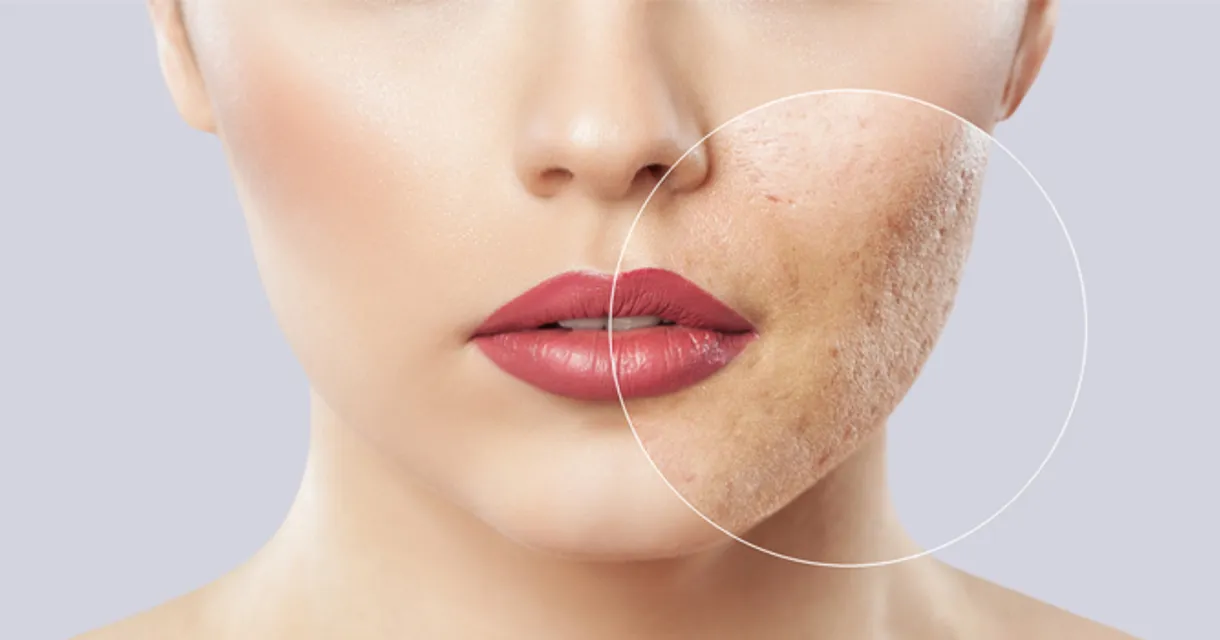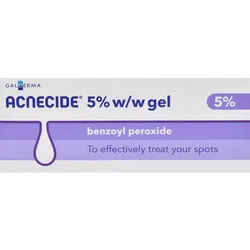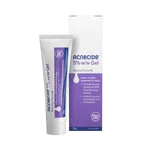What is Acne?
Acne is a common inflammatory skin disease that occurs in both teenagers and adults, usually affecting the face, back and chest areas, causing spots to form.
Acne causes different types of spots including:
- Blackheads - these are small black or yellowish bumps. A popular myth is that they are filled with dirt but actually they are dark because of the inner lining of the hair follicle.
- Whiteheads - these are more solid and firm bumps than blackheads. They do not leak any substances when they are pressured.
- Papules - small red spots that usually cause discomfort.
- Nodules - large, solid lumps that form beneath the skin.
- Pustules - small red bumps that have a white centre caused by pus.
- Cysts - large lumps filled with fluids, such as pus, that form just underneath the skin and can result in permanent scarring if not properly treated.
What causes Acne?
Acne can be caused by a variety of factors from excessive oil production to hormone imbalances. Acne is commonly caused when follicles for hair and sebaceous (oil) glands in your skin’s pores become blocked. The pore is a small opening that can easily become blocked by oil, dead skin cells, or certain types of bacteria. This provides the perfect environment for bacteria to flourish, which can potentially cause skincare problems such as acne.
How can you prevent Acne?
There are steps that you can add to your routine to help reduce the possibility of acne, such as maintaining a good skincare routine. This is something that should be a priority in everyone's hygiene and self-care regime. If you have acne, you should always discuss this with your doctor or pharmacist as they can offer you medical advice and support on the best products and methods to use.
Wash your face
Washing your face with lukewarm water on a daily basis can help to clear and rehydrate your skin. Acne often affects the face, therefore keeping your face hydrated and clean can prevent the build-up of bacteria, oil and dead skin cells within your pores.
There is also an Acnecide Wash available which is ideal for larger areas such as the back and chest. Please note that when using this product you should avoid contact with the eyes, eyelids, lips and other delicate areas of the skin.
Have a good hair care routine
Your hair also secretes oil through the sebaceous glands; this oil substance is referred to as sebum. Sebum is an essential substance that coats, moisturises, and protects your hair, giving it a healthy shine and making it soft to the touch. Some people may find that their glands produce too much oil, which causes their hair to look greasy. Oily substances from your hair can transfer to your face and skin, causing an excess of oil leading to pores becoming blocked. If pores become blocked, there is an increased chance of acne forming.
For these reasons, taking care of your hair routinely can help to prevent acne problems. It is important to use the right shampoo for your hair type to prevent greasy hair. Another haircare tip would be to use conditioner to keep your hair nourished and healthy, but to avoid excessive use of conditioners. You should also avoid conditioners that are labeled as intense or deep as these are more appropriate for people with dry hair types, as opposed to oily hair. Limiting the use of hair gel or sprays is also advised as these can block your skin’s pores.
Popping pimples can cause scarring
It is important not to pop or squeeze pimples as this causes irritation of the skin and disrupts your skin’s natural healing cycle. Popping pimples can lead to scarring and skin inflammation which can cause acne to take longer to heal. So, try to avoid the temptation as much as possible.
What is Acnecide Gel?
Acnecide is a topical product containing the active ingredient Benzoyl Peroxide. The medicine has been found to help in the reduction of the bacterium associated with acne. It is therefore often used in the treatment of acne.
Acnecide Gel ingredients
Acnecide Topical Aqueous Gel contains Benzoyl Peroxide (active ingredient), Docusate Sodium, Disodium Edetate, Glycerol, Propylene Glycol, Acrylates Copolymer, Poloxamer 182, Carbomer 940, Colloidal Anhydrous Silica, Sodium Hydroxide and Purified Water.
What to consider before using Acnecide Gel?
- Always read the instruction leaflet before use.
- Do not use Acnecide if you have an allergy or sensitivity to benzoyl peroxide or any of the other ingredients in the product.
- Product for external use only. Avoid any contact with the eyes, mouth, angles of the nose and other mucous surfaces (mucous surfaces include the lining of your nose). If there is any accidental contact, you should rinse the area thoroughly with warm water. If you swallow any of the product you must seek immediate medical advice.
- Do not use on damaged skin.
- The product cannot be used with other acne products unless your doctor or pharmacist has advised to do so.
- Tell your doctor or pharmacist if you are taking, or have recently taken any other medicines.
- Unless a doctor has told you otherwise, you should not use Acnecide if you are pregnant, breast-feeding, or think you could be pregnant.
- The product can cause skin irritation.
- It is normal to experience feelings of skin tension, dryness, or burning, stinging or itching sensations. It is also normal to experience a small amount of skin peeling or redness. These effects should be mild and will stop once treatment stops or if you reduce the use of the gel. If there are any concerns or strong symptoms, seek immediate medical advice.
- Acnecide is a medicine and can cause side effects. Stop using the product if your skin becomes seriously irritated, your skin shows signs of irritation not outlined as normal during initial use, or you are having serious side effects. You should seek medical advice if side effects are serious or different from those listed in the leaflet.
How to use Acnecide Gel?
Acnecide Topical Aqueous Gel is for external use only. You should always follow the directions of use as well as advice offered by a doctor or pharmacist. Follow these directions of use unless your doctor or pharmacist has told you otherwise:
- You should start by using the lower strength Acnecide product. If your skin tolerates this lower strength gel, your doctor or pharmacist may recommend continued treatment with a higher strength gel.
- Always read the leaflet and instructions before use.
- Wash the affected area with a mild, unscented, skin cleanser and water.
- Gently pat your skin dry.
- Apply the gel once or twice a day to the affected areas.
- If you experience peeling or dry skin, it may be helpful to reduce the number of times you apply the gel throughout the day.
- Avoid exposure to sunlight when using Acnecide gel. If you cannot avoid this, then use a suitable sunscreen lotion and apply the Acnecide gel during evenings.
How long does it take to see results?
The length of time that you should use Acnecide gel will be dependant on the rate at which your acne is improving, however, if you have used the product for one month and are still having problems, or have not seen any improvement, then it is advised to speak to your doctor or pharmacist again.
Where to buy Acnecide Gel?
Acnecide gel can usually be purchased online from pharmacies and may also be prescripted by a doctor. Purchasers will have to agree to confirm that they are over 10 years of age and that they are not allergic to the ingredients of the products. Discover Weldrick Pharmacy’s range of Acnecide Gels and Products.



